-
2018.12.20
Food allergy to hazelnut occurs both with and without concomitant pollen allergy.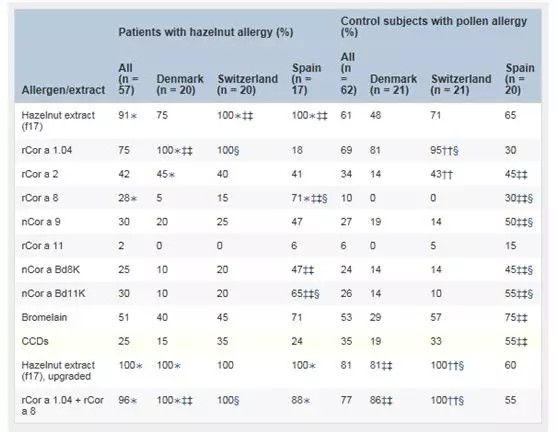 READ MORE
READ MORE -
2018.12.18
Soy allergy is one of the most common food allergies. The presence of IgE specific to soy component storage proteins Gly m4, m5, and m6 has been indicated as a means to improve the specific identification of systemic and local soy allergic reactions. READ MORE
READ MORE -
2018.12.18
Incidence of food allergy is increasing, including diseases with apparently unique pathophysiologic pathways such as eosinophilic esophagitis (EoE), milk anaphylaxis and galactose-alpha-1,3-galactose (alpha-gal) allergy. The role of IgE in these diseases has been well studied, though the contribution of other antibody subtypes, including IgG4, is less clear. READ MORE
READ MORE -
2018.12.18
Previous studies have demonstrated insufficient sensitivity of commercially available celeriac extract reagents in the diagnosis of celeriac allergy. READ MORE
READ MORE -
2018.12.18
Sensitization to wheat flour plays an important role in the development and diagnosis of baker's asthma. READ MORE
READ MORE -
2018.12.18
Detection of IgE to recombinant Hymenoptera venom allergens has been suggested to improve the diagnostic precision in Hymenoptera venom allergy. However, the frequency of sensitization to the only available recombinant honeybee venom (HBV) allergen, rApi m 1, in patients with HBV allergy is limited, suggesting that additional HBV allergens might be of relevance.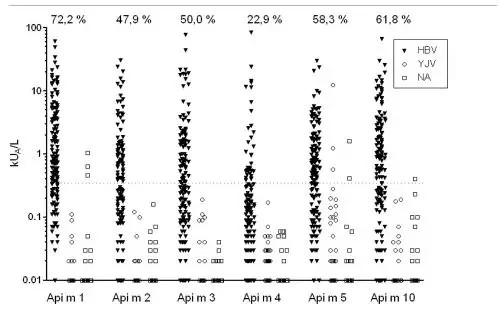 READ MORE
READ MORE -
2018.12.18
Food sIgG and sIgG4 are highly individually versatile. We put a hypothesis that one of the responsible factors is the presence of gastrointestinal inflammatory diseases. The objectives were: 1. An analysis of wheat and rice sIgG and sIgG4 in healthy children, children with IgE-mediated wheat allergy (WA), coeliac disease (CD) and Helicobacter pylori infection (HP). 2. Usability of wheat sIgG and sIgG4 in the WA diagnostics.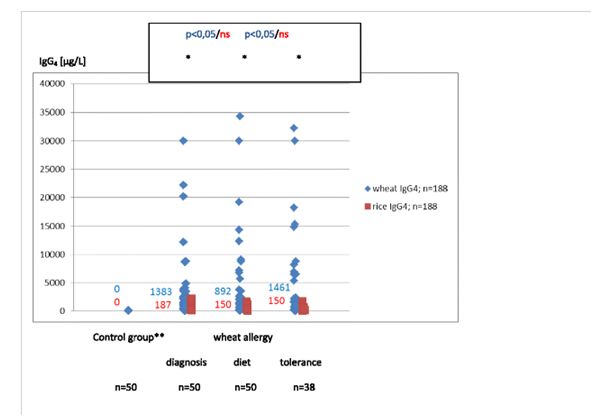 READ MORE
READ MORE -
2018.12.10
IgG4-related disease (IgG4-RD) is a systemic disorder, which is characterized by elevated serum IgG4 concentrations and infiltration of abundant IgG4 positive plasma cells in the multiple lesions. It has been reported the lesions of IgG4-RD present Th2 dominant immunity. And the patient often shows allergic history and/or symptoms. The aim of this study is to investigate allergic involvement in patients with IgG4-RD. READ MORE
READ MORE -
2018.12.10
Allergen-specific IgG4 (sIgG4) antibodies are often associated with tolerance, but sIgG4 antibodies to causally relevant foods have been reported recently in adults with eosinophilic esophagitis (EoE). Prevalence and levels of food sIgG4 are not well established in the general pediatric population.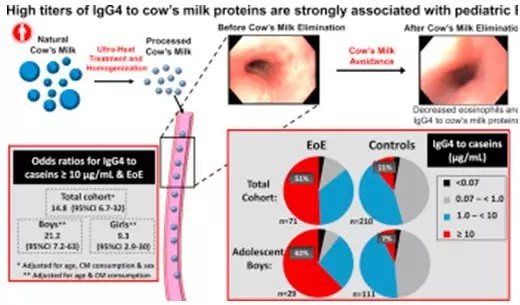 READ MORE
READ MORE -
2018.11.26
Eosinophilic esophagitis (EoE) is associated with specific IgG4 antibodies (sIgG4) to common foods, especially cow’s milk (CM). Little is known regarding the epidemiology of sIgG4 to CM or other foods in the general population. Thus, the diagnostic utility of IgG4 assays is unclear. READ MORE
READ MORE -
2018.11.26
Background: Pollen-food syndrome (PFS) is heterogeneous with regard to triggers,severity, natural history, comorbidities, and response to treatment. Our study aimed to classify different endotypes of PFS based on IgE sensitization to panallergens.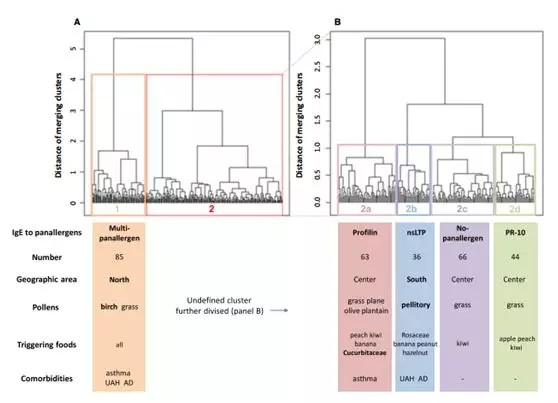 READ MORE
READ MORE -
2018.11.26
Background: The house dust mite (HDM) allergen Der p 13 could be a lipid-binding protein able to activate key innate signaling pathways in the initiation of the allergic response. We investigated the IgE reactivity of recombinant Der p 13 (rDer p 13), its lipid-binding activities, and its capacity to stimulate airway epithelium cells. READ MORE
READ MORE -
2018.11.26
Der p 23 was recently identified in a European population as a major allergen and potentially a chitin binding protein. READ MORE
READ MORE -
2018.11.26
Background: Although the genetics of asthma has been extensively studied using both quantitative and molecular genetic analysis methods, both approaches lack studies specific to the childhood phenotype and including other allergic diseases.This study aimed to give specific estimates for the heritability of childhood asthma and other allergic diseases, to attempt to replicate findings from genomewide association studies (GWAS) for childhood asthma and to test the same variants against other allergic diseases.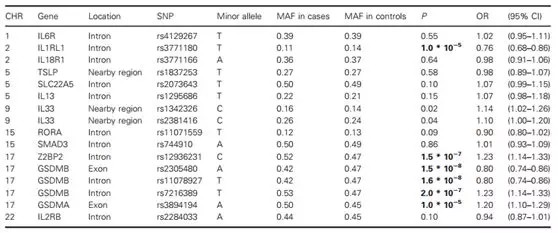 READ MORE
READ MORE -
2018.11.26
Background: The shift in airway smooth muscle cells (ASMCs) phenotype between proliferation and contraction during asthma has been reported recently, highlighting a role of ASMCs plasticity in the pathophysiology of asthma. As an event involved in epigenetic post-translational modification, histone H3 lysine27 (H3K27) demethylation has attracted significant attention with respect to the epigenetic changes in diverse cells; however, little is known about its contribution to the switching of ASMCs phenotype in asthma .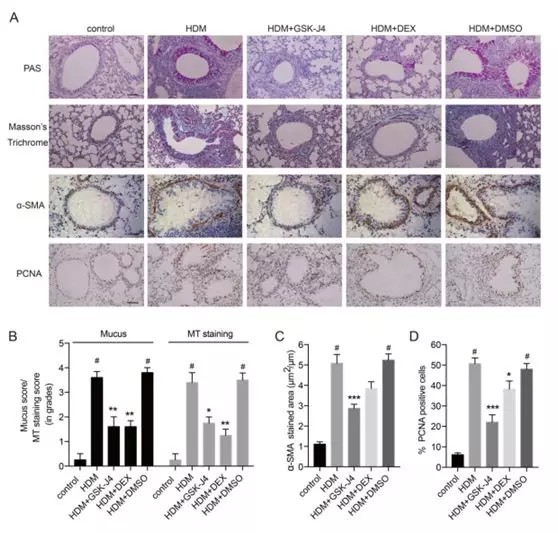 READ MORE
READ MORE -
2018.11.26
Differences in the IgE response to isoallergens could have clinical implications; therefore, its analysis will contribute to the design of better strategies for the diagnosis and treatment of allergic respiratory diseases. Several isoforms have been described from mites but there is no information about the clinical impact of Blomia tropicalis isoallergens. READ MORE
READ MORE -
2018.11.13
To establish by oral food challenge the proportion of children with clinical peanut allergy among those considered peanut-sensitized by using skin prick tests and/or IgE measurement, and to investigate whether component-resolved diagnostics using microarray could differentiate peanut allergy from tolerance. READ MORE
READ MORE -
2018.11.13
A systematic nomenclature for allergens originated in the early 1980s, when few protein allergens had been described. A group of scientists led by Dr. David G. Marsh developed a nomenclature based on the Linnaean taxonomy, and further established the World Health Organization/International Union of Immunological Societies (WHO/IUIS) Allergen Nomenclature Sub-Committee in 1986. Its stated aim was to standardize the names given to the antigens (allergens) that caused IgE-mediated allergies in humans.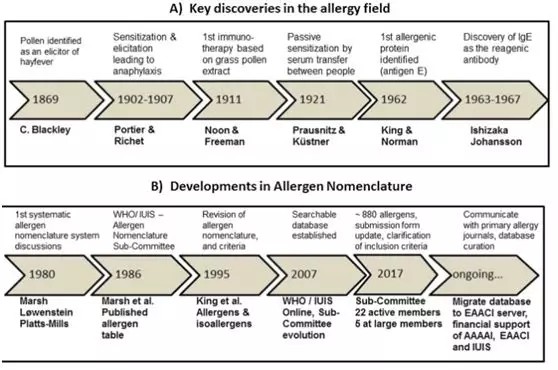 READ MORE
READ MORE -
2018.11.13
Increasing dairy consumption in China has been accompanied by rising incidence of milk allergy. Here we analyzed profiles of specific immunoglobulin E (sIgE) against cow's milk proteins, and assessed their value for milk allergy diagnosis among infants and young children from northern China.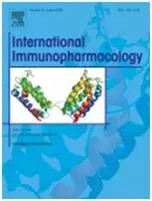 READ MORE
READ MORE -
2018.11.13
Egg allergy is the most common food allergy in children with atopic dermatitis (AD). This study aimed to determine the prevalence of egg allergy, component patterns and predictive values of screening tests in egg allergy in South African children with AD. READ MORE
READ MORE
MK手机投注 | 安博·体育(中国)有限公司-官网 | 乐动官方网站 | 星空手机版 | 星空手机版 | mk体育(MKsports集团)股份公司 | 安博手机网页版登录入口 | 华体平台 | 千亿体育官网在线登录入口中国有限公司 |
 华亿体育(中国)游戏平台
华亿体育(中国)游戏平台
